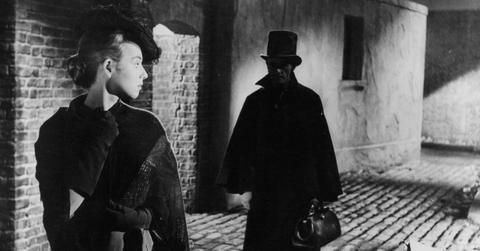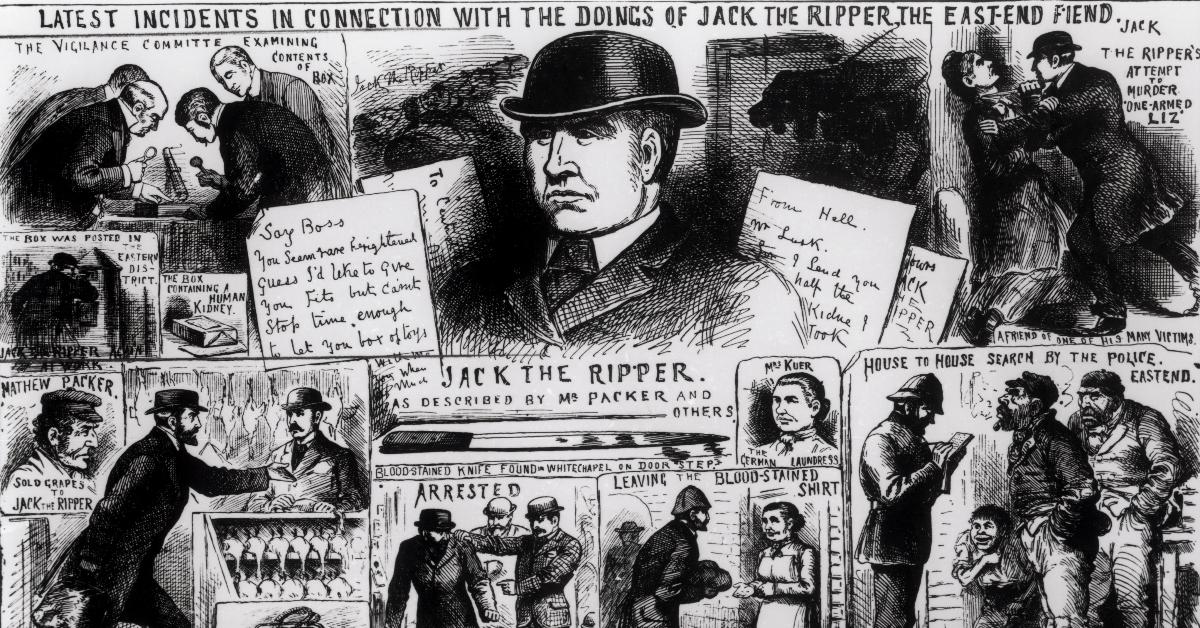Scientists Believe They've Uncovered the Identify of Jack the Ripper Using DNA Evidence
"I’ve got the only piece of forensic evidence in the whole history of the case."
Published Aug. 1 2024, 9:45 a.m. ET

The world's fascination with true crime is hardly anything new. According to the New York Times, a chaplain by the name of Henry Goodcole worked at one of London's most infamous penitentiaries: Newgate Prison. From 1620 to 1636, Goodcoole made extra money by writing down the horrific stories told to him by murderous prisoners and then selling them in pamphlet form.
Goodcole wasn't the first person to capitalize on the crimes of others, and he certainly wasn't the last. Since then, true crime has become a moneymaking juggernaut with seemingly no end or limitations in sight. Because of its popularity, fans of the genre often find themselves obsessed with similar cases. The story of the man who killed five women in Whitechapel in the year 1888 is but one of them. Did they ever catch Jack the Ripper? Here's what we know.

Did they ever catch Jack the Ripper? No, but scientists believe they know who he was.
The Ripper's crimes tore through Whitechapel, a section of London, from the end August 1888 to the beginning of November. During that time, he brutally murdered five women. All of them were sex workers whose throats he slashed. He removed and kept the uteruses of two victims and removed the left kidney of one of those women. Many believed his obsession with anatomy combined with his skilled knife work meant Jack the Ripper was a doctor. Scientists now believe that wasn't the case.
A forensic investigation published in the Journal of Forensic Sciences has identified the killer as Aaron Kosminski, a 23-year-old Polish barber and prime suspect at the time. Kosminski was brought back to the front of the suspect line in a 2014 book by British businessman and Ripper researcher Russell Edwards, titled Naming Jack the Ripper. Five years later, DNA evidence supported Edwards's theory.

Tests were done on a bloodied shawl Edwards purchased from an auction in 2007. "I’ve got the only piece of forensic evidence in the whole history of the case," he told The Guardian in September 2014. The DNA testing performed in March 2019 was the most advanced to date. The shawl reportedly belonged to Catherine Eddowes, Jack the Ripper's fourth victim, and one of two women he killed in a single night. It was found next to Eddowes's body.
Researchers took fragments of mitochondrial DNA, which is inherited from the mother, and compared it to relatives of Kosminski. Not only did they find a match, but they also analyzed the killer's physical appearance. Although they were only able to say the killer had brown hair and brown eyes, that matched Kosminski and the only statement provided by a witness.
Not everyone believes Aaron Kosminski is Jack the Ripper.
About six months after this study was published, Kim Rossmo, a research professor in the School of Criminal Justice at Texas State University, pushed back on the results. The retired Canadian police detective inspector, and self-described Ripperologist, found numerous flaws after carefully going over the results.
He pointed to tunnel vision and confirmation bias as two of the main problems, then dug into some of the original police reports to poke holes in the idea. First, Rossmo addressed the shawl, which was "not referenced in any investigation reports from the era, and the researchers fail to establish its provenance." Not only was there blood on the shawl, but there was reportedly semen as well. Rossmo pointed out the fact that there was never any mention of sexual assault being part of the Ripper murders.
In terms of the science, Rossmo argued that the genetic marker they found which connected the shawl to Kosminski is actually quite common. "While mtDNA testing can be used to eliminate suspects, it cannot implicate them," he said, "it cannot implicate them."